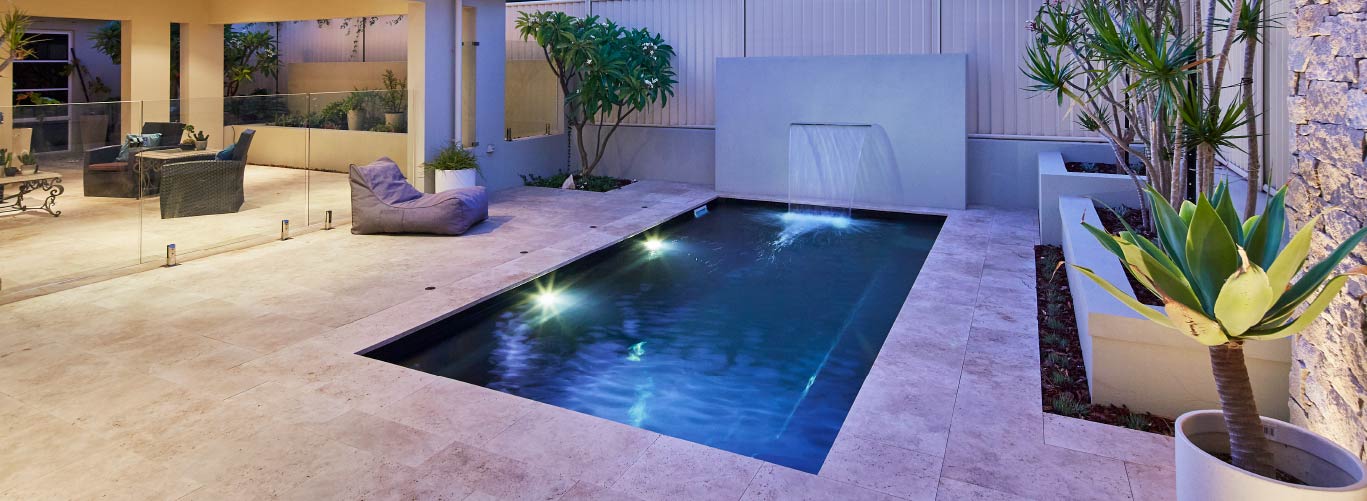Fibreglass Pool Maintenance Checklist
Fibreglass pools are a popular choice among homeowners due to their durability and ease of maintenance. With the correct cleaning routine and pool care, your fibreglass pool can retain its sleek look and functionality for many years. Here's a comprehensive checklist to help you maintain your fibreglass pool.

Regular Skimming and Vacuuming
One of the simplest and most effective ways to keep your fibreglass pool clean is by skimming off the debris on a daily basis. By using a long-handled skimmer, you can easily remove leaves, bugs, and other unwanted debris that may be floating on the pool surface, ensuring a pristine swimming environment. In addition to regular skimming, it is important to incorporate weekly vacuuming into your pool maintenance routine. This will help to remove any debris that has sunk to the bottom of the pool, ensuring that your pool remains free from any dirt or particles that may affect its clarity and cleanliness. Not only does regular vacuuming keep your pool looking its best, but it also plays a crucial role in maintaining the efficiency of your pool’s circulation system. By removing debris from the bottom of the pool, you can prevent clogs and blockages in the filtration system, ensuring that water can flow freely and effectively throughout the pool. Furthermore, regular vacuuming can also help to reduce the amount of chemicals needed to keep your pool water balanced and sanitised.
Pool Chemicals
To effectively maintain the water chemistry in your fibreglass pool, it is crucial to utilise essential pool chemicals. These include pH increasers or decreasers, which play a vital role in balancing pH levels for optimal water conditions. Alkalinity increasers are also necessary to ensure proper alkalinity is maintained, promoting a stable environment for your pool. Additionally, incorporating sanitising agents like chlorine or bromine is essential as they effectively eliminate bacteria, ensuring clean and safe water for swimmers. Furthermore, the use of algaecides is highly recommended to prevent the growth of algae, enhancing pool clarity and improving filtration efficiency. To further enhance the clarity of your pool water, consider using a clarifier that works to gather and eliminate tiny particles that can cause cloudiness. Lastly, it is of utmost importance to handle these chemicals with care and store them in a safe and secure manner, ensuring the well-being and safety of all pool users.

Checking and Balancing Pool Chemistry
Maintaining proper water chemistry is of utmost importance for any swimming pool. It is highly recommended to regularly check the pool’s pH, alkalinity, and sanitizer levels, ideally at least once a week during peak pool usage season. The ideal pH level, which indicates the acidity or alkalinity of the water, should be maintained between 7.2 and 7.6 for optimal balance.
By ensuring balanced water chemistry, you not only prevent the growth of algae but also protect your valuable pool equipment from corrosion, thereby extending its lifespan. Moreover, maintaining the appropriate chemical balance in your pool water ensures a safe and enjoyable swimming experience for everyone.
Cleaning the Pool Filter
The pool filter plays a crucial role in maintaining the cleanliness and clarity of your pool water. It acts as a barrier, trapping dirt, debris, and other impurities to prevent them from circulating back into the pool. Depending on the type of filter you have, such as a sand, cartridge, or diatomaceous earth filter, it’s important to clean it regularly to ensure optimal performance.
One of the signs indicating that the filter needs cleaning is a noticeable decrease in the water flow from the pool returns. If you notice that the water is not flowing as strongly as before, it’s a good indication that the filter may be clogged and in need of cleaning. Additionally, an increase in the pressure gauge reading on the pool equipment can also signal the need for filter maintenance.
Regular cleaning and maintenance of the pool filter will help to keep your pool water crystal clear and ensure that it continues to effectively remove impurities, providing you with a refreshing and enjoyable swimming experience.
Inspecting the Pool for Damage
It is important to regularly inspect your fibreglass pool for any visible signs of damage, such as cracks or bulges. These small issues, if left unattended, can potentially escalate into more extensive and costly repairs. Therefore, it is highly recommended to promptly address any damage by seeking professional repair services. By taking proactive measures and ensuring the well-being of your pool, you can enjoy a longer lifespan and minimise the risk of further damage down the line.

Scheduling Regular Professional Inspections
While regular DIY maintenance can keep your pool in good condition, it’s recommended to have a professional inspection at least once a year. Pool professionals have the right skills and tools to thoroughly inspect your pool and its equipment, potentially spotting and fixing issues before they turn into major problems.
Importance of Pool Covers
Pool covers are an essential tool in maintaining your fibreglass pool and offer numerous benefits. Firstly, they act as a barrier against debris and dirt, reducing the need for frequent cleaning. They can significantly decrease the amount of leaves, insects, and other unwanted material entering your pool. In addition, pool covers can help to maintain a stable water temperature by reducing heat loss during the cooler hours. This can make your pool more energy-efficient by reducing the need for extra heating. Moreover, pool covers can prevent unnecessary water evaporation, which can save on water usage and maintain the balance of chemicals in your pool. Lastly, a cover can provide an added layer of security, particularly for families with young children or pets, by preventing unwanted access to the pool. Regular use of a pool cover can lead to longer periods between maintenance, potential cost savings, and an overall more enjoyable swimming experience.
Conclusion
Maintaining a clean and well-functioning fibreglass pool requires a combination of regular skimming and vacuuming to remove debris, proper water chemistry balance, filter maintenance and inspection for damage, effective water circulation, and professional inspections. By incorporating these essential steps into your pool maintenance routine, you can enjoy a pristine swimming environment all season long. So take the necessary steps to keep your pool in top shape and ready for endless hours of outdoor fun! The key is consistency and vigilance in keeping up with regular maintenance tasks, so you can relax and enjoy your pool without any worries. Happy swimming!


